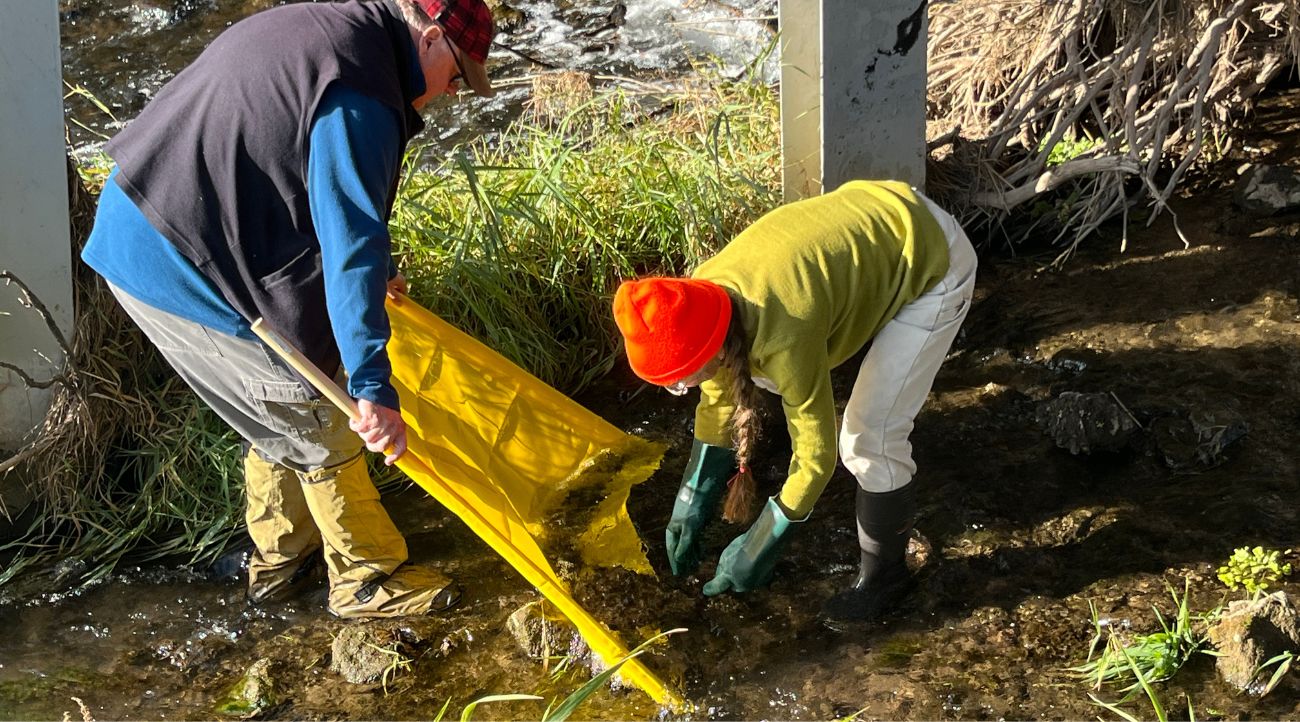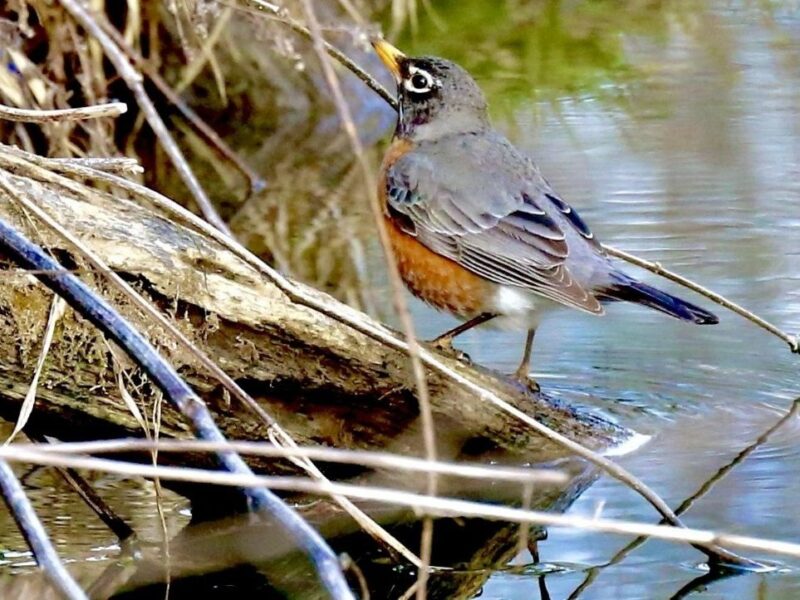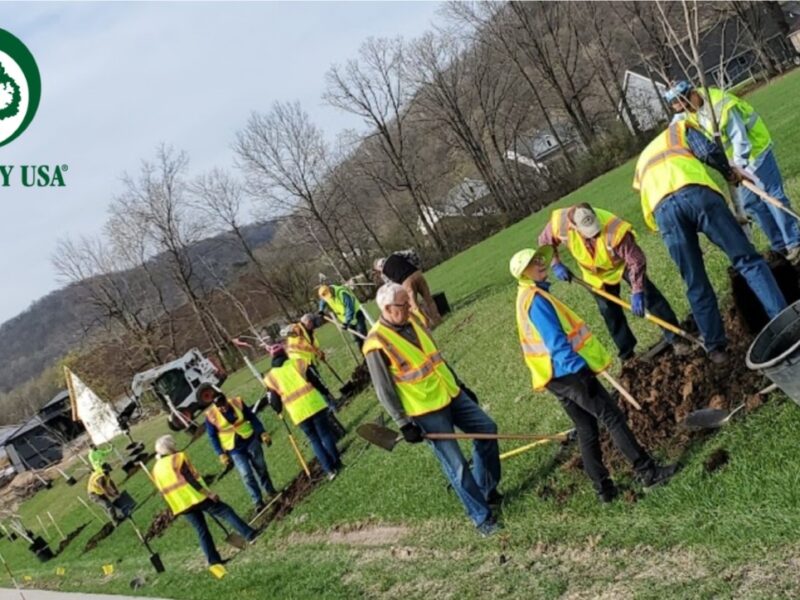Brian Raney and Caroline van Schaik collecting macroinvertebrates in Chatfield's Mill Creek. (Photo by Laurie Byrne)
Aquatic Guardianship: The Importance of Monitoring and Maintaining Our Waterways
“Rivers and the inhabitants of watery elements are made for wise men to contemplate and for fools to pass by without consideration.” Izaak Walton
CHATFIELD – Isaak Walton, an avid fisherman and 17th century English author of The Compleat Angler, believed in the importance of the government to protect the environment and encouraged other anglers to obey laws to protect the ecosystems of the streams.
Centuries later, in 1922, a group of fishermen and hunters concerned with pollution due to industrial waste, logging and soil erosion began the Izaak Walton League of America (IWL).
In 1969, as oil spills and burning rivers became an issue, the IWL created the program, Save Our Streams (SOS). This program began with volunteers simply cleaning up trash from local waterways.
And then in the 1980s, volunteers were trained to collect and record scientific data to study the health of streams. This data was used by local, state and federal agencies to make decisions about the management of water quality. It was instrumental in the 1972 Clean Water Act – and no less important today in determining how best to manage local waterways, including those in southeast Minnesota.
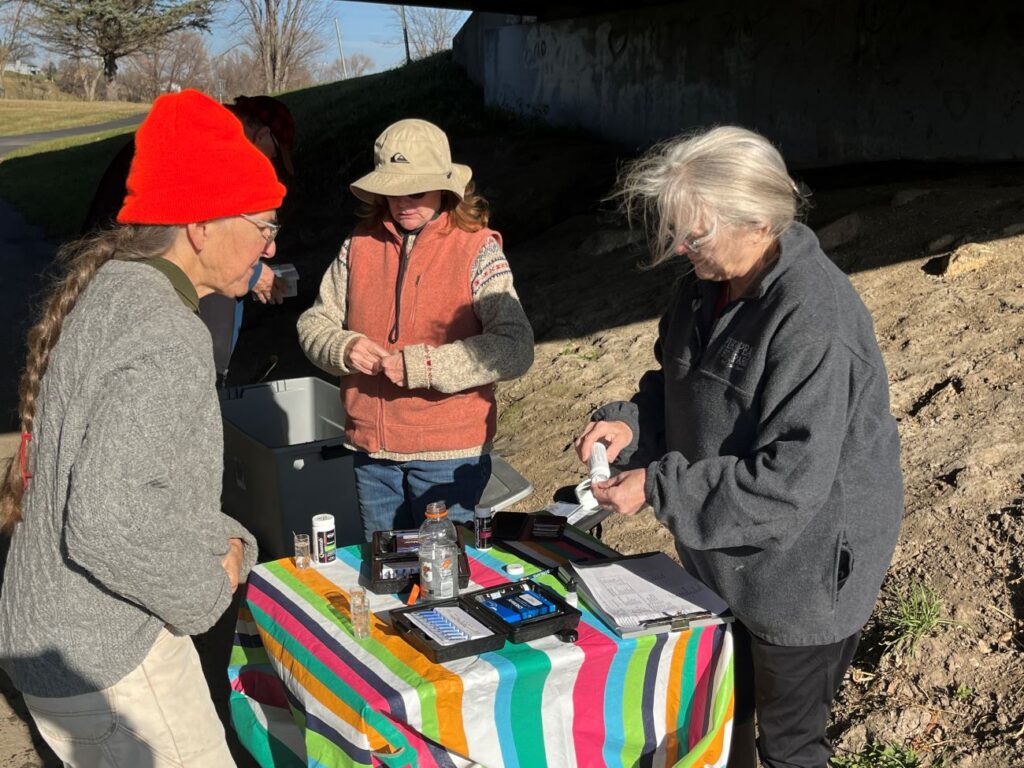
Debra Collum, Amy Cordry and Caroline Van Schaik ready their testing supplies beside Mill Creek. (Photo by Laurie Byrne)
Gathering Physical Data at Streamside
Reverend Debra Collum, pastor at Chatfield’s United Methodist Church, is a trained SOS volunteer. She’s been monitoring Mill Creek for several years – she’s even taught Vacation Bible School and confirmation students the value of healthy waterways with object lessons and outings.
This past November, Collum recruited several fellow volunteers to help with her monitoring. Brian Raney, Amy Cordry and Caroline van Schaik willingly waded into the creek to assist in collecting fall data from the stream.
[Mill Creek is a tributary of the North Branch of the Root River, running south from Olmsted County, through Chatfield, and eventually to the Root. A noted trout stream, its water quality benefited from a 2023 improvement project, sponsored in part by Minnesota Trout Unlimited (read Root River Current‘s Mill Creek in Chatfield Gets Partial Makeover).]
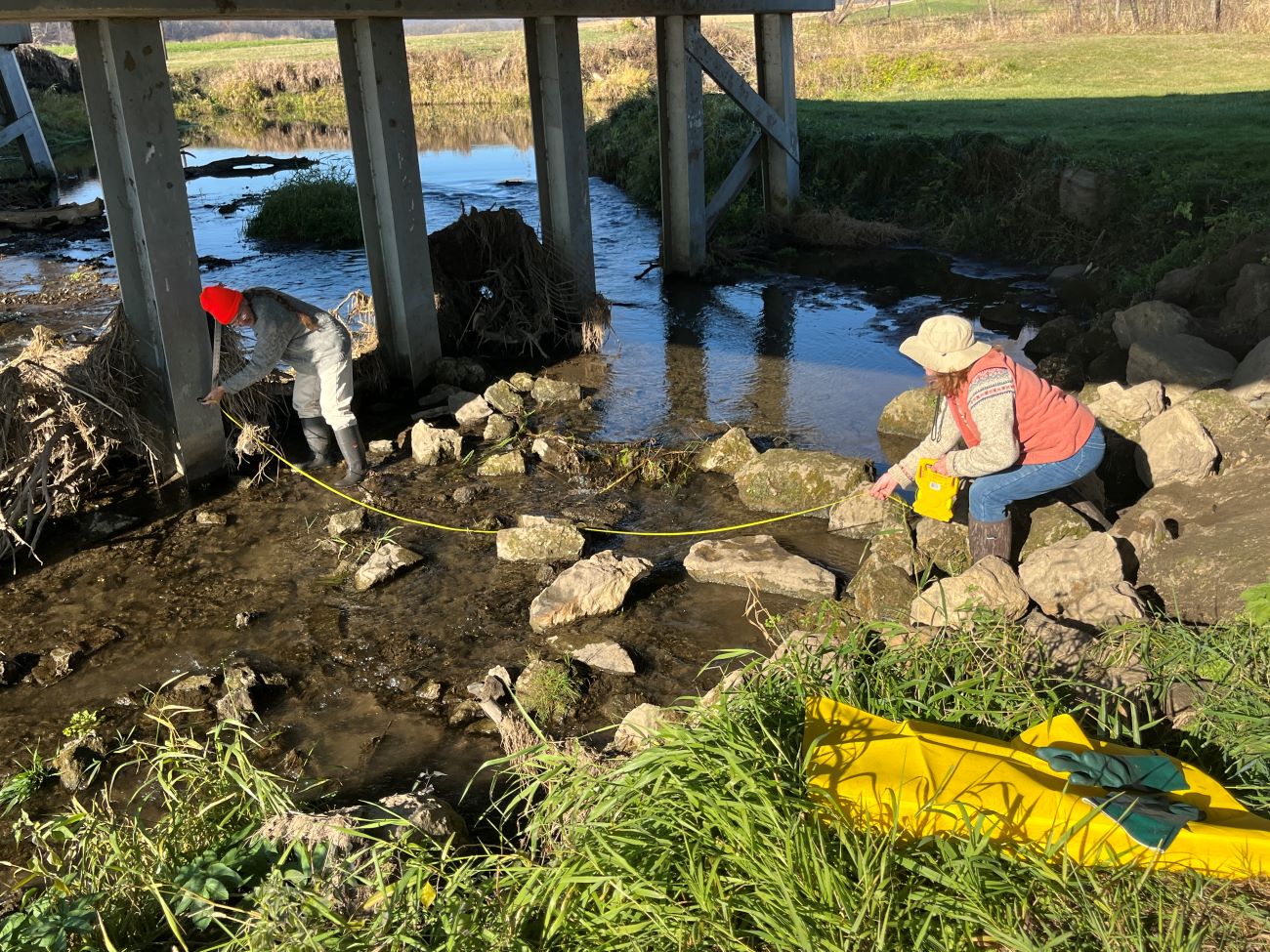
Amy Cordry and Caroline van Schaik measure the width of the stream section being tested. (Photo by Laurie Byrne)
The physical data collected included measuring the width of the creek and verifying the average depth (several measurements taken in the area to arrive at the average) at the section of the creek that the data would be collected. Other data collected included the rate of water flow and weather. Although the air was brisk, it was a beautiful sunny autumn morning.
Testing the Water
Turbidity is the measure of clearness in the water. Although one may think that clear water equates to clean water, this isn’t an accurate assessment of the health of the water.
Tannin, which comes from organic matter such as trees and leaves, can cause the water to look brown or yellow. The presence of algae in the water also prevents “clear” water. The right quantity of algae and tannins can be a sign of health.
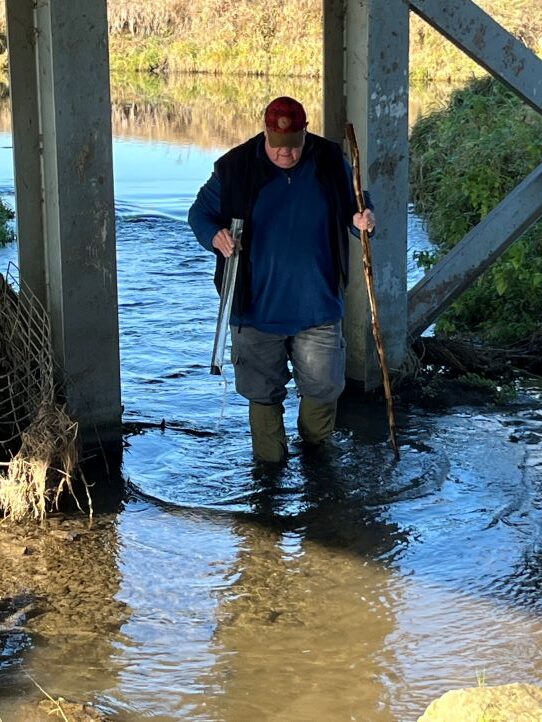
Brian Raney collects water for turbidity measurement during testing at Mill Creek. (Photo by Laurie Byrne)
One reason for these measurements is to compare consistency from year to year. If the turbidity is different from other previous testing, scientists have a clue and look for what may have caused the change.
Chemically Testing the Water
The chemical testing of water monitors chloride, phosphate and nitrate levels, as well as the pH (the potential of hydrogen which indicates the acidity level) of the water. Much like the turbidity test, volunteers are looking for consistency or changes from previous data which are indicators of possible contamination.
According to the national environmental organization Clean Water Action, the “greatest threat to the quality and health of Minnesota’s rivers, lakes, streams, and drinking water sources is excess chemicals, fertilizers and sediment…”
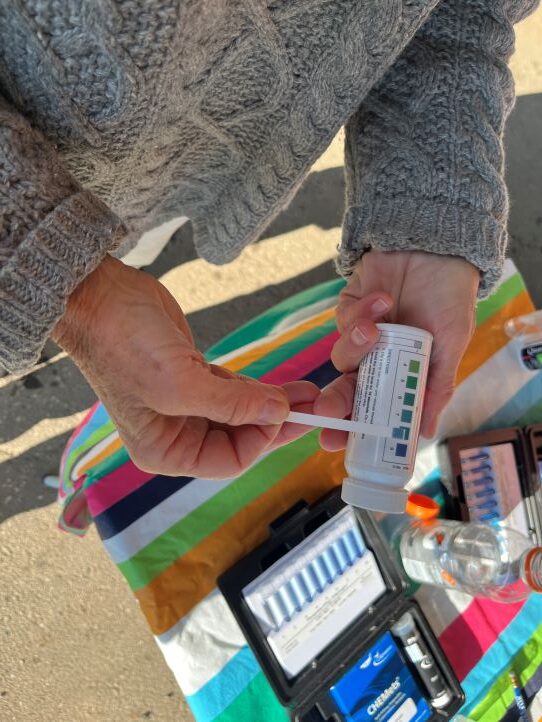
Testing for Mill Creek’s pH, or acidity. (Photo by Laurie Byrne)
Collum stated that Mill Creek is “amazingly clean.” She attributes this to the agricultural practices of small family farms in the area as opposed to big, corporate farms.
Collecting Critters from the Stream
Raney holds a kick net – a tool for collecting insects in streams – which lets water through but has a tight weave so organisms can be caught. Van Schaik, meanwhile, stirs things up by standing up stream, shuffling around and rubbing dirt (and bugs!) off of rocks that then flow through the kick net.
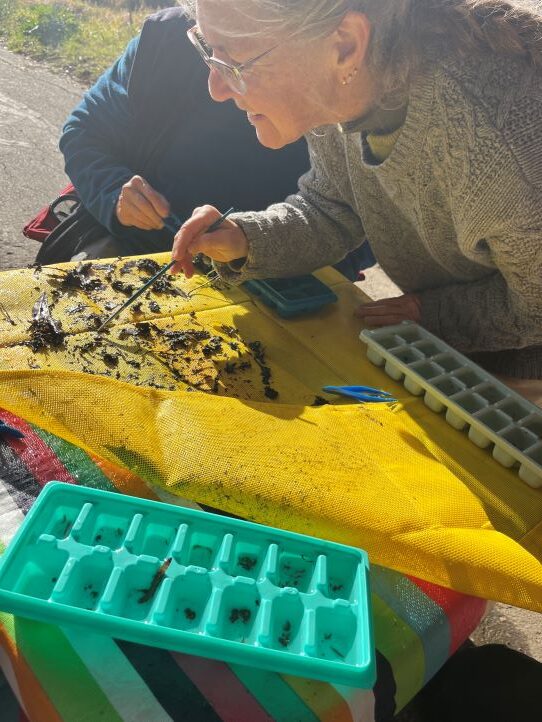
Volunteers sift through debris collected from Mill Creek to find macroinvertebrates. (Photo by Laurie Byrne)
The kick net is placed on a table as everyone gathers around to separate the macroinvertebrates from the debris. The bugs and friends (not all are bugs) are organized by type. Izaak Walton League has field guides and an app called Creek Critters that are helpful in identifying the macroinvertebrates.
Once a large sampling of organisms is identified, the different types are tallied. Many of the aquatic macroinvertebrates are insects in the nymph and larval stages (mayflies, dragonflies, etc.). Others are snails, clams and crayfish. These organisms are good indicators of a healthy waterway – the more diversity, the better!
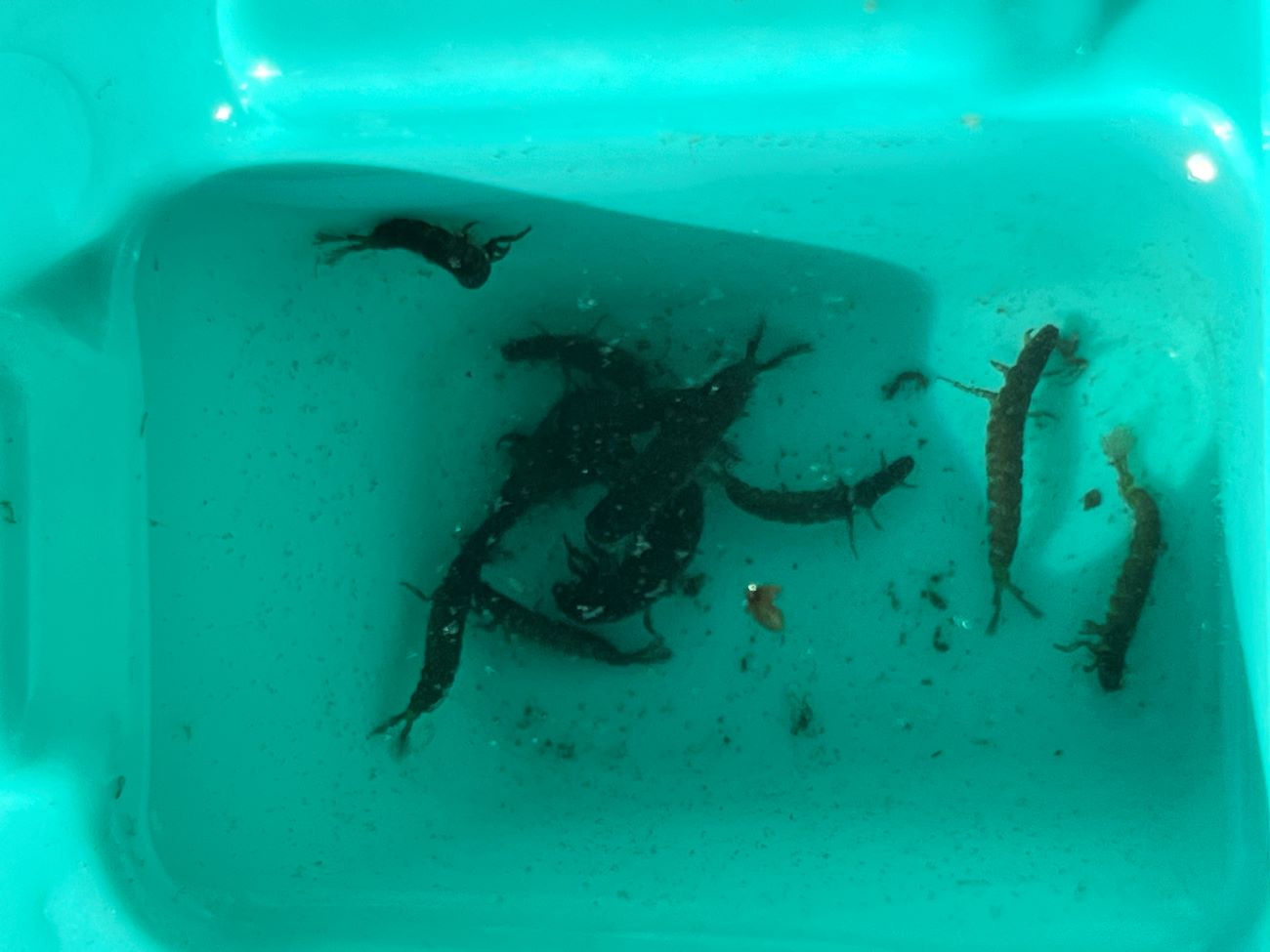
Caddisfly and other macroinvertebrates collected during testing on Mill Creek. (Photo by Laurie Byrne)
Once home, Collum enters the date collected on the Clean Water Hub, a national data-sharing website managed by the Izaak Walton League. This site is a collective tool that tracks water quality in waterways all over the United States.
Whether locally on Mill Creek or on streams around the country, being able to compare data over the years is valuable as the watershed reflects the surrounding environment and can provide indicators or predictors of the health of the community.
…………………

Contributor
Laurie Byrne is a small business owner in Chatfield. Art, hiking, cooking, and reading are just a few of her favorite things.


